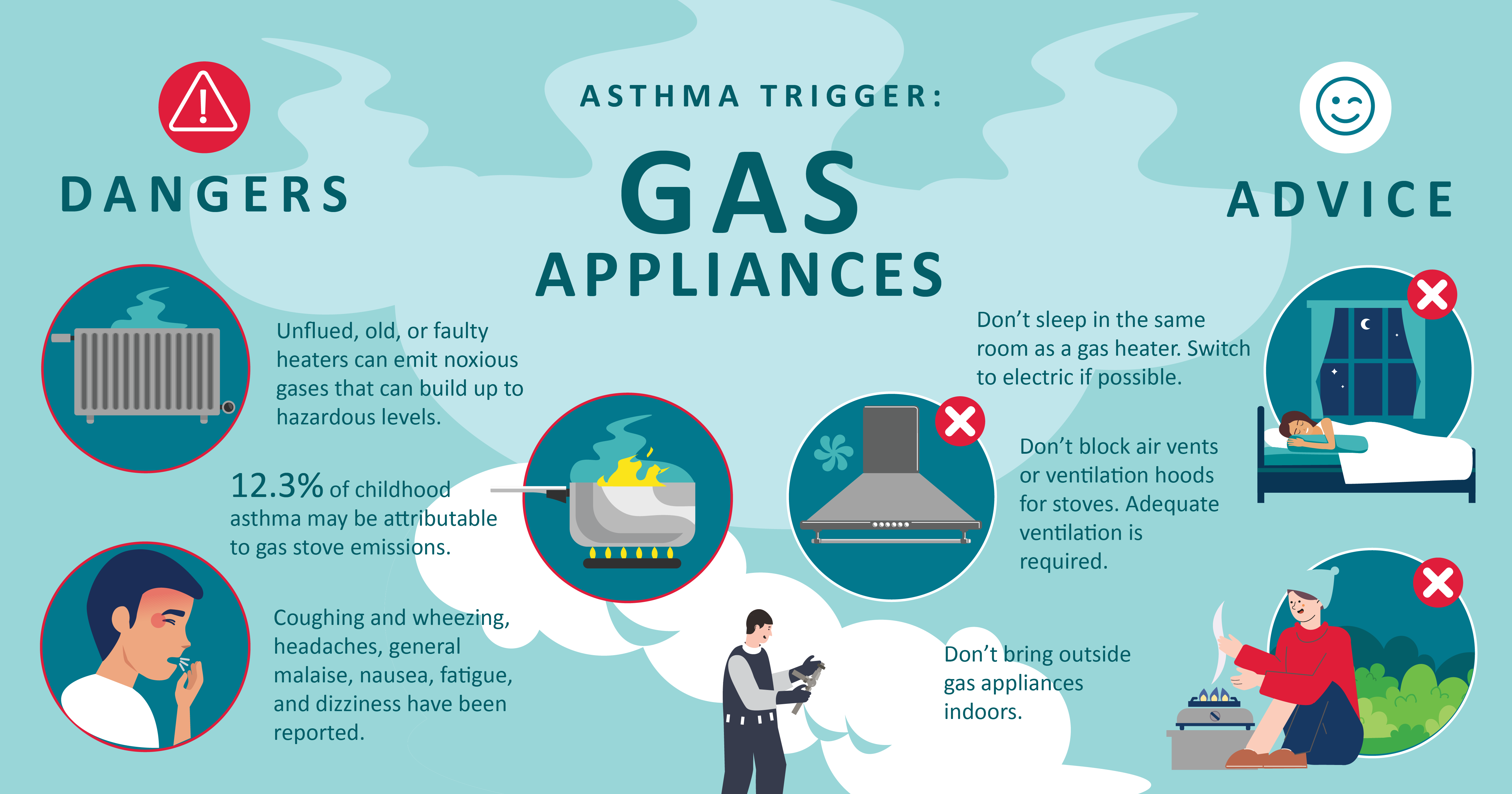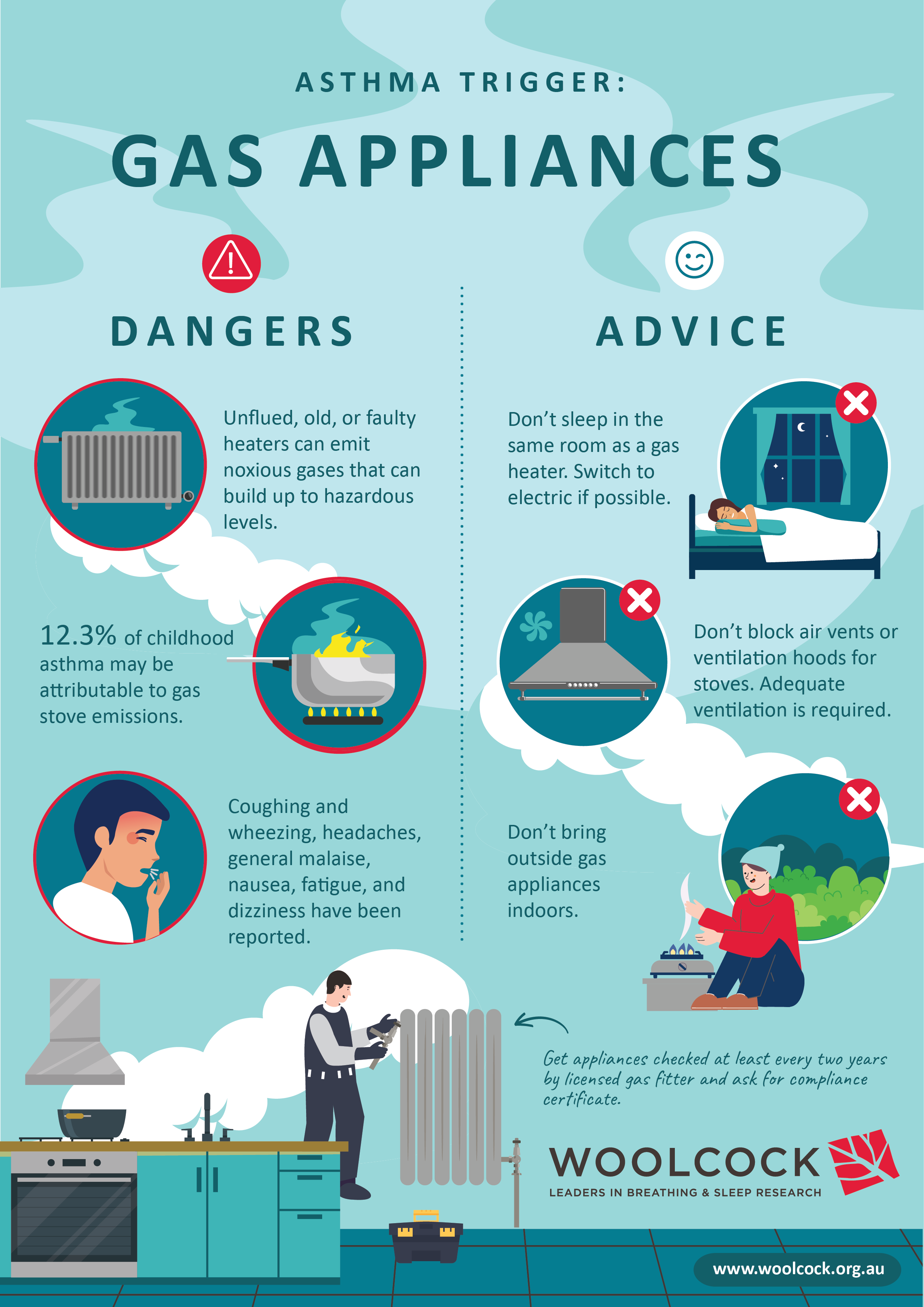The Woolcock Institute of Medical Research

Navigating the hidden hazards of gas appliances for people with asthma
In the first of the Asthma Week series covering known triggers in the home for people with asthma, the Woolcock’s Dr Christine Cowie talks about gas stoves and heaters.
Gas appliances in the home are known to release harmful gases, including carbon monoxide, nitrous oxides and formaldehyde and we need to adopt safer alternatives to mitigate the risks and safeguard indoor air quality.
This is especially so for those with asthma and other respiratory diseases who are “already vulnerable to respiratory irritants and face heightened risks when exposed to such noxious gases. And while we can’t all afford to switch to cleaner forms of energy, we should be doing our best to reduce pollutants and irritants in our home,” said Dr Cowie.
Cooking with gas
Results from an Australian study estimated that 12.3% of current childhood asthma could be attributable to exposure to gas stove emissions. Using exhaust fans while cooking can potentially reduce this risk to a mere 3%. * While high-efficiency exhaust fans may not be possible in all settings, there is no doubt that ventilation reduces the risk.
Warm but potentially deadly
The same goes for gas heating. While flued gas heaters vent most pollutants outside, they still release pollutants inside, just to a smaller extent. Unflued, faulty, or aging gas heaters release harmful gases directly into homes. The biggest danger posed by these appliances is the release of carbon monoxide, aptly nicknamed the ‘silent killer.’ This odourless, tasteless and invisible gas can lead to symptoms ranging from headaches and dizziness to severe cases of respiratory distress and even death at very elevated levels.
Bringing outdoor heating appliances (gas appliances, charcoal or briquette burners) inside the home is also a big no-no, as these appliances will often emit high and dangerous levels of carbon monoxide and nitrous oxides. Every year there are reports of people being hospitalised due to carbon monoxide poisoning, and in extreme cases, deaths have occurred.
What can we do to reduce this risk?
Addressing these risks requires a multi-faceted approach. Dr Cowie advocates for a shift away from gas appliances in the home. Heating using electrical appliances is cleaner for the homeowner and reverse cycle air-conditioning is the most efficient and clean form of heating and cooling. If this is not possible, adequate ventilation plays a pivotal role in reducing gas-related risks. “To mitigate these risks, proper ventilation is crucial. Opening windows and doors to encourage cross ventilation helps reduce the concentration of harmful gases,” she said.
Other tips include:
- Servicing of gas heaters, by a licensed gas fitter, at least every two years is crucial to ensure there are no leakages of gas.
- Installing a carbon monoxide monitor to alert residents to dangerous levels of the gas.
- Not using gas heaters in bedrooms (this is illegal in most Australian states).
- Be careful of using gas appliances in small, confined spaces such as caravans, boats and utility rooms (e.g. pool-pump rooms). Always ensure there is plenty of ventilation.
While gas appliances may seem convenient and familiar, the potential health risks and environmental impact, along with the widespread availability of more efficient and cleaner alternatives, warrants serious consideration.
There’s an important role for government too and we have recently seen some local councils banning new gas installations in new-build homes. Government (state and local) are also offering incentives and subsidies to install roof-top solar panels to help homeowners become self-sufficient in their electricity energy use which is a step in the right direction toward healthier and more sustainable homes.
*Knibbs, LD, Woldeyohannes, S, Marks, GB, and Cowie, CT. 2018. 'Damp housing, gas stoves, and the burden of childhood asthma in Australia', Med J Aust, 208: 299-302
Find out more
- About Respiratory Services at the Woolcock Clinic
- The health impacts of using gas heaters and appliances at home: ABC Radio Adelaide with Dr Christine Cowie











